After a blustery night on top of the car, we woke up in a tightly packed campground 10 minutes outside of Drumheller, Alberta. The campground was large, with a field, playground and a baseball diamond. As we had arrived in the dark last night, we had missed all of the campgrounds features as well as the oddly shaped hills with colourful layers of rock surrounding us.
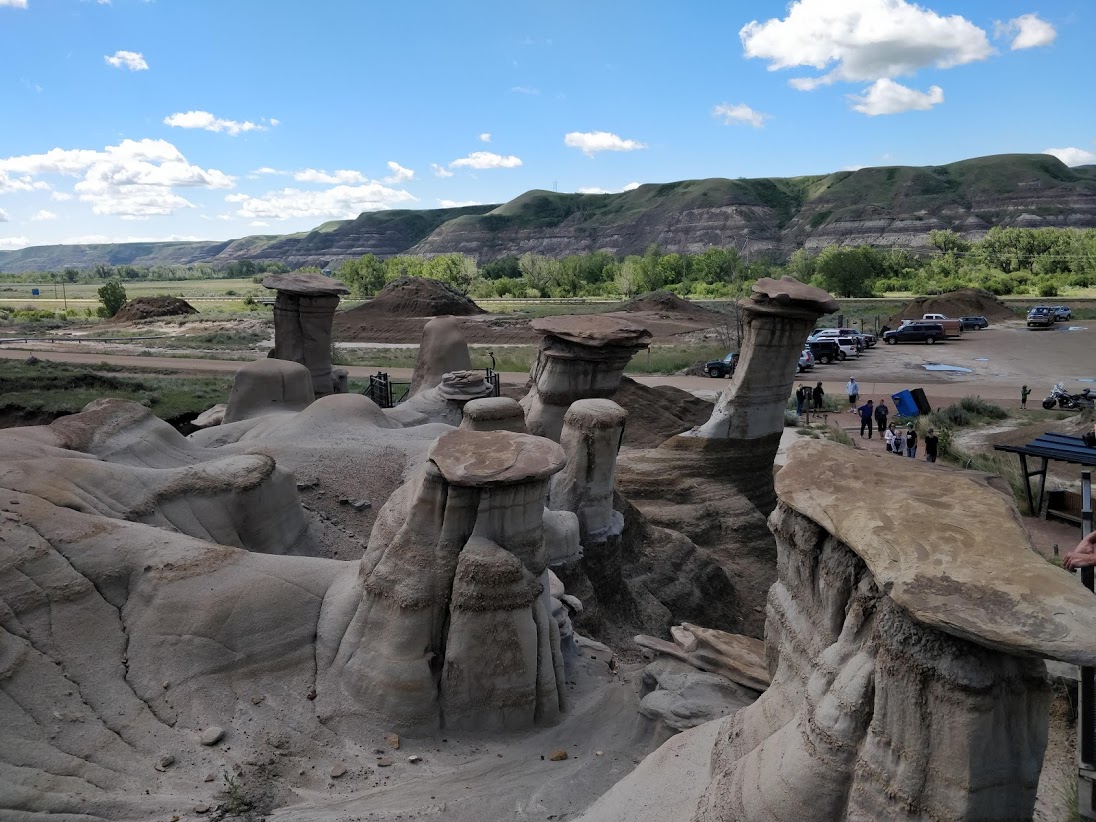
Our first stop of the day was a visit to the hoodoos. These strange rock formations occur when the layers of sedimentary rock that make up the landscape erode at different speeds. A layer of harder rock, acts as a capstone, holding the softer rock beneath it in place, creating a mushroom-shaped column. This hoodoo site was just off the main highway, with a trail map, interpretive boards and ice cream stand.
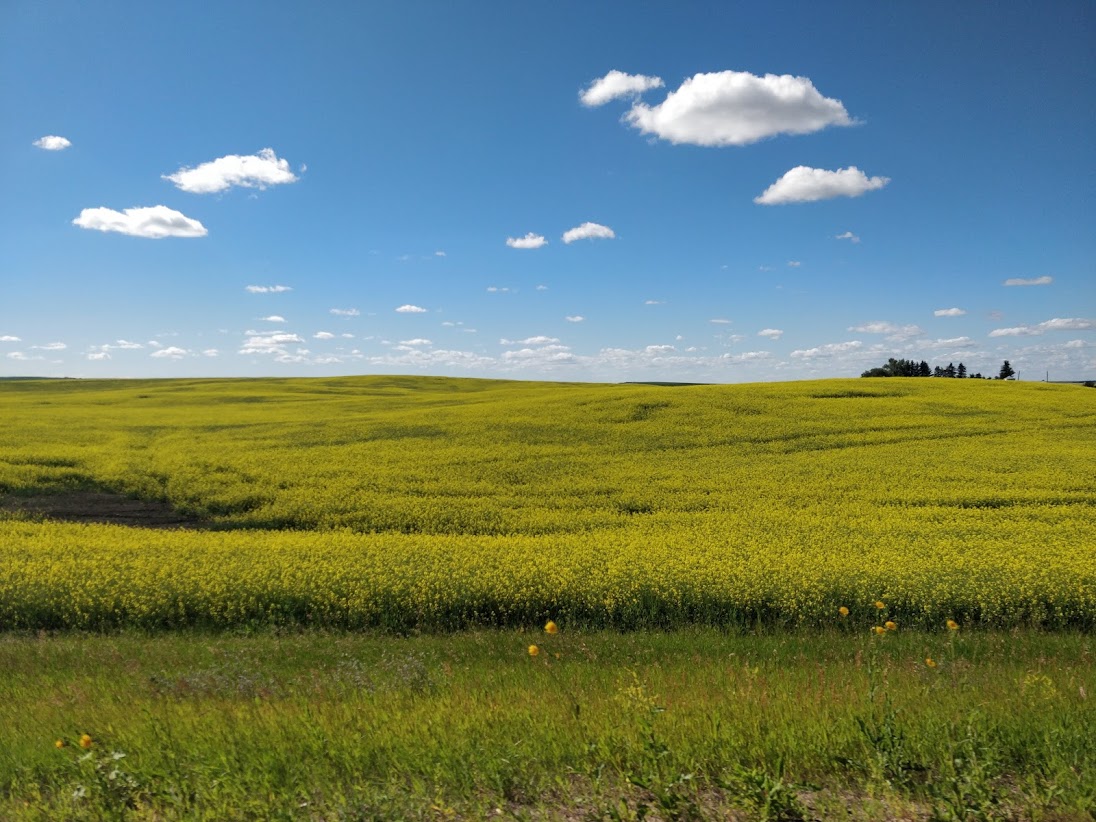
Another feature of Alberta's landscape which we totally missed driving through the night was a yellow flowering crop that we later worked out to be canola. Wheat, barley and canola account for 3/4 of total crop production in Alberta. The flat rolling landscape is a stunning contrast to the enormous mountains we have been surrounded by for the last couple of weeks!

Driving past the fields we also noticed several oil pump jacks, bobbing up and down surrounded by nothing more than an oil tank and a small fence. For the same reasons we keep finding fossils in the region (500 million years ago, Alberta was under the sea)- Alberta is rich in oil.
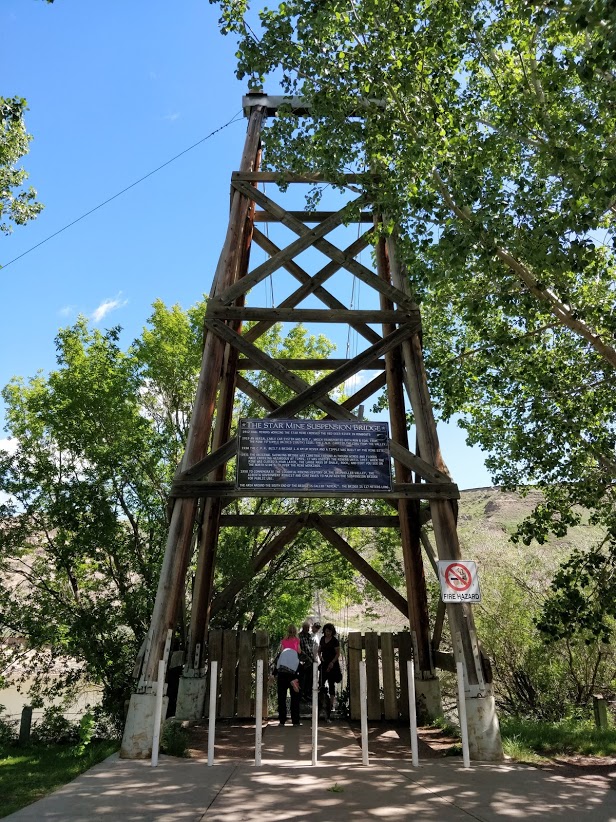
We stopped off at a suspension bridge used by miners in the early 20th century. The bridge leads across a river to a series of coulees in which seams of coal (the darker layers in the rock) were mined for 40 years.
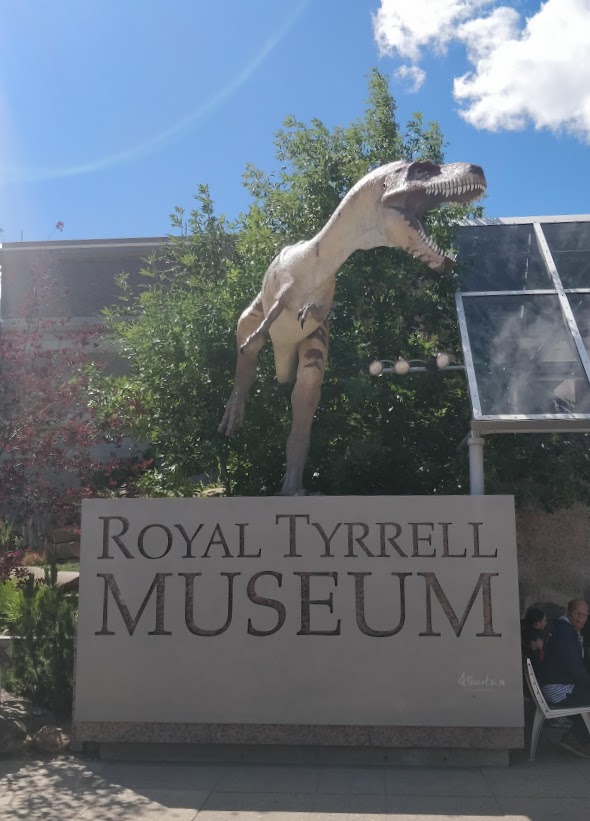
Our next stop was the Royal Tyrell Dinosaur Museum. Several people have mentioned it to us as something we must do, so when the opportunity arose (i.e. when we were within 3 hours drive of it), we jumped at the chance! It is fair to say that it lived up to all expectations.
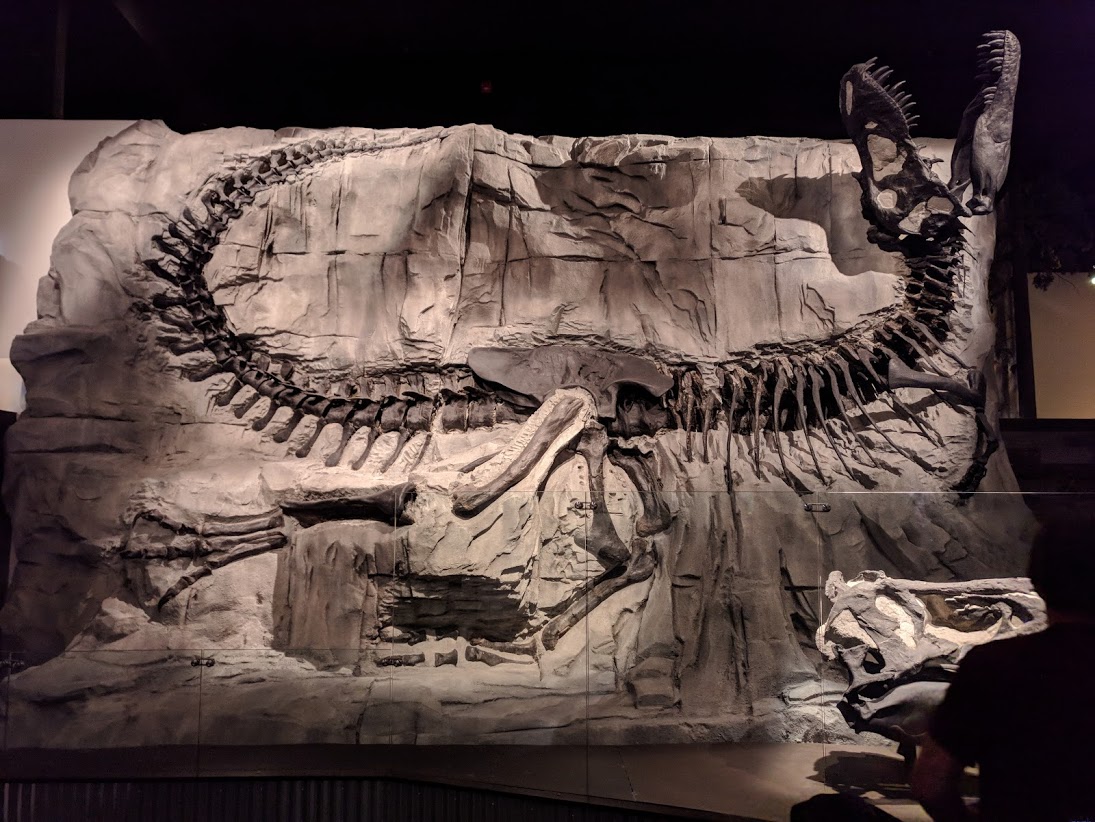
The museum has an incredible catalogue of fossils, representing the history of life on earth from the Precambrian era (4600-541 million years ago), through to the present day. Initially, you were lead through a series of rooms that set you up to better understand the upcoming exhibits. Tectonic plate movements, the theory of evolution and the process of fossilisation were explained clearly and engagingly through hands-on exhibits and amusing videos.

We walked through a 'time machine', which rewound the clock to 500 million years ago. From there, the exhibits progressed forward through time, focusing on significant events in each time period. Of particular interest to us, was the Burgess Shale exhibit. A larger than life, undersea scene had been created showing what scientist believe the environment would have looked like and how the creatures would have lived. Very cool!
Overall, we thought the museum did an outstanding job of creating scenes and representations of the fossils and information they have gathered. It was interesting to see how the museum maintained the distinction between fact and artistic interpretations. In some instances, very little is known about how an animal looked/acted/lived, but the museum presented their best renditions of what they know.
After a few long, busy days I think we will be having a quieter day tomorrow to recharge for the next leg of our trip, back towards Vancouver.

